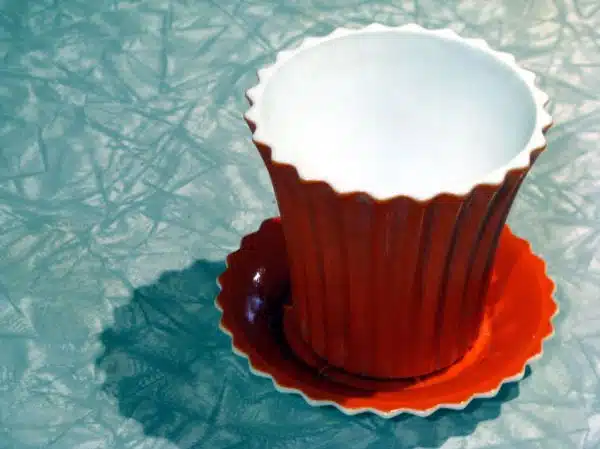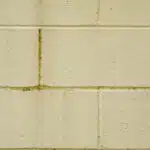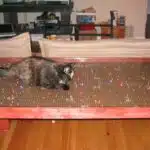Glass vases are a popular decorative item that can be found in many homes, offices, and public spaces. They add elegance and sophistication to any room and are often used to display flowers or other decorative items. Painting glass vases is a great way to personalize them and create a unique look that complements your décor. However, painting glass can be a challenging task, especially if you are not familiar with the techniques involved.
As an expert in glass painting, I have seen many people struggle with painting glass vases. In this article, I will share my knowledge and expertise on how to paint glass vases successfully. Whether you are a beginner or an experienced painter, this guide will provide you with the necessary information and techniques to create beautiful painted glass vases that will impress your friends and family. So if you want to learn how to paint glass vases like a pro, read on!
Types Of Glass Vases To Paint
Glass vases are a popular choice for people who want to create unique and personalized home decor pieces. There are many different types of glass vases available for painting, each with its own set of benefits and challenges. When choosing a glass vase to paint, it’s important to consider the decorative techniques you plan to use and the vase’s shape.
One type of glass vase that is ideal for painting is a clear or frosted glass vase. These vases allow you to experiment with various decorative techniques such as stenciling, etching, or hand-painting intricate designs. Clear vases also give you the opportunity to display flowers or other decorative items inside the vase while still showing off your painted design.
Another type of glass vase that is popular among painters is colored glass vases. These vases come in a variety of shades and can add an interesting dimension to your painted design. Colored vases work especially well when using metallic paints or glitter accents. However, it’s important to keep in mind that some colors may obscure your design if not chosen carefully.
When looking for a glass vase to paint, don’t be afraid to choose one with an unusual shape. The unique contours can add visual interest to your finished piece and make it stand out even more. Just be sure to take into consideration the shape when deciding on your design and painting technique. With so many options available, there’s no limit to what you can create with a little creativity and some basic tools and materials!
Tools And Materials Needed For Glass Painting
As a glass painting expert, I have found that the process of painting glass vases can be both rewarding and challenging. To achieve the desired effect, one must have the right tools and materials at their disposal. When it comes to tools, it is essential to have a set of high-quality paintbrushes in various sizes to ensure accurate application on different parts of the vase. Additionally, having a palette knife for mixing colors and a paint tray for easy access to multiple colors can streamline the process.
The choice of color is also crucial when it comes to painting glass vases. The type of paint used will determine what colors are available, but with proper preparation techniques, most paint types can be used effectively. Some popular choices include metallic colors like gold or silver for a luxurious look or bright, vibrant colors for an eye-catching statement piece. Glass painting techniques such as shading and highlighting can also create depth and dimensionality in the design.
Before beginning any glass painting project, preparing the surface is critical to achieving optimal results. This step involves cleaning the vase thoroughly with soap and water and then drying it off completely. Any residue or fingerprints left on the vase will prevent the paint from adhering correctly, so ensuring that the surface is free from debris is essential. Once cleaned, any imperfections in the glass surface should be sanded down using fine-grit sandpaper to create an even canvas for your design.
Preparing The Glass Surface
- Prior to painting glass vases, the surface must be properly cleaned and prepped to ensure a successful outcome.
- To clean the vase, warm water and dish soap should be used to remove any dirt and debris from the surface.
- Sanding the vase with a fine-grit sandpaper is recommended to create a smooth surface for painting and can help to remove any imperfections.
- To ensure the vase is adequately prepped for painting, it is important to inspect the surface for any hanging particles after sanding and to wipe it clean with a damp cloth.
Cleaning The Vase
As a glass painting expert, I understand that preparing the glass surface is crucial to achieve a flawless finish when painting glass vases. One of the most critical steps in this process is cleaning the vase thoroughly. Using cleaning agents that are safe for use on glass surfaces is essential to eliminate all dirt and grime effectively.
When cleaning your vase, it’s essential to pay attention to any stains on the glass surface. These stains can be stubborn and challenging to remove, but with the right cleaning agent, they can be eliminated. Be careful not to scratch or damage the surface of the glass while removing these stains.
In summary, using appropriate cleaning agents and carefully removing any stains from your vase will ensure that your glass painting project turns out beautifully. It’s important to take the time to prepare the glass surface correctly before beginning any painting work. By doing so, you’ll have a smooth and clean surface ready for your creativity.
Sanding The Vase
Preparing the glass surface is an essential step in achieving a flawless finish when painting glass vases. Apart from cleaning the vase thoroughly, sanding the surface is another vital process that requires careful attention. Sanding helps to create a roughened surface that allows for better adherence of paint, resulting in a more durable and long-lasting finish.
Choosing sandpaper with an appropriate grit level is crucial when sanding glass surfaces. It’s recommended to use a fine-grit sandpaper, such as 220-grit or higher, to avoid scratching or damaging the glass surface. One effective technique for sanding is to wet the sandpaper with water before starting to prevent dust particles from clogging and scratching the surface.
When sanding the glass vase, it’s important to be gentle and apply even pressure throughout the entire surface. Avoid applying too much pressure or using an abrasive motion, which can create scratches or unevenness on the glass surface. By following these techniques for sanding, you’ll create a smooth and roughened surface ready for painting, ensuring excellent adhesion of paint and a beautiful finished product.
Choosing The Right Paint For Glass Vases
Painting on glass is a delicate task that requires the right type of paint. When it comes to selecting paint for glass vases, there are several factors to consider. The first thing to keep in mind is that not all paints will adhere well to glass surfaces. Therefore, it’s essential to use specialized paint formulated explicitly for glass painting.
There are two types of paint suitable for glass vase painting: acrylic and enamel. Acrylic paints work best for small projects, while enamel paints are ideal for larger surface areas. Acrylics dry quickly, making them perfect when you want to layer colors or use painting techniques like sponging or stamping. Enamel paints take longer to dry but create a glossy finish that’s durable and resistant to water and heat.
Color selection is another crucial factor when choosing the right paint for your glass vase project. Consider the color scheme you want to achieve and choose colors accordingly. Pastel colors such as blues, pinks, and greens are excellent choices if you’re going for a soft look, while bold colors such as reds, oranges, and yellows work well if you want your vase to stand out.
- Always use specialized paint formulated explicitly for glass painting.
- Acrylic paints work best for small projects.
- Enamel paints are ideal for larger surface areas.
- Choose colors according to the color scheme you want to achieve.
In summary, selecting the right paint is vital when painting on glass vases. Acrylics and enamels are both excellent choices depending on the size of your project and desired finish. Color selection plays an essential role in achieving your desired look; therefore, it’s important to choose wisely. In the next section, we’ll explore tips on mixing paint colors specifically designed for glass painting projects.
Tips For Mixing Paint For Glass Vases
- When selecting paint for painting on glass vases, it is important to choose a paint that is specifically designed for glass and ceramic surfaces.
- To mix the paint, you should use a ratio of two parts paint to one part water.
- It is also important to stir the paint thoroughly to ensure that no lumps are present.
- To ensure good adhesion, it is recommended to clean the glass surface with a cleanser and a soft cloth prior to applying the paint.
- When applying the paint, it is important to use a brush that is well-suited for the glass surface.
- Finally, it is recommended to apply several thin coats of paint, rather than one thick coat, to ensure even coverage and a professional-looking finish.
Selecting Paint
When it comes to painting glass vases, selecting the right paint is crucial. Mixing techniques and color combinations are important considerations in this process. As a glass painting expert, I suggest using enamel or acrylic paints when painting on glass vases.
Enamel paints are known for their durability and glossy finish, making them ideal for glass surfaces. They come in a variety of colors and can be mixed with other enamel paints to create custom shades. Acrylic paints, on the other hand, have a more matte finish but are easier to work with as they dry quickly and do not require any special preparation.
When selecting paint colors, consider how they will complement each other on the vase surface. For instance, complementary colors such as blue and orange or green and red can be used to create a striking contrast while analogous colors like blue-green or purple-blue can be combined for a more harmonious effect. Experimenting with different color combinations can lead to unexpected yet beautiful results.
In conclusion, selecting the right paint is crucial in achieving a successful glass vase painting project. Enamel and acrylic paints offer different benefits depending on your needs and preferences while considering mixing techniques and color combinations will help you achieve the desired outcome. With these tips in mind, you’ll be able to create stunning painted glass vases that are both functional and decorative.
Mixing Paint
When it comes to painting glass vases, achieving the right color and shade is essential. Mixing paints can be a daunting task, but with careful consideration of color blending and shade matching, you can create stunning painted glass vases that are both functional and decorative.
When mixing colors for your glass vase painting project, start by selecting a primary color. Then, add small amounts of other colors to create different shades. It’s important to mix the paints thoroughly to achieve a consistent color throughout. You can also experiment with different ratios of colors to create custom shades that complement each other on the vase surface.
To achieve a more realistic or natural look, consider using a technique called dry brushing. This involves removing most of the paint from the brush before applying it to the vase surface in short strokes. The result is a subtle texture that mimics natural patterns found in nature. With these tips in mind, you’ll be able to mix paints effectively and create beautiful painted glass vases that will impress anyone who sees them.
Applying Paint
When it comes to painting glass vases, blending colors is just the beginning. Applying paint onto the vase surface is equally important in achieving a polished finish. One technique that can be used for applying paint is layering. By layering different shades of paint on top of each other, you can create depth and dimension in your design. Start by applying a base coat of paint and allow it to dry completely before adding additional layers.
When layering, it’s important to use a light touch with your brush and avoid pressing too hard on the vase surface. This will prevent streaks and unevenness in your design. Another application technique that can be used for glass painting is stippling. This involves dabbing the brush onto the vase surface to create small dots or speckles of color. Stippling can be used to add texture or highlight specific areas of your design.
To ensure that your painted glass vase has a smooth and even finish, it’s important to let each layer of paint dry completely before adding another layer. This may require patience and multiple sessions of painting, but the result will be worth it in the end. With these blending and application techniques in mind, you’ll be able to create stunning painted glass vases that are sure to impress anyone who sees them.
Techniques For Applying Paint To Glass Vases
After you have mixed your paint, the next step is to apply it to the glass vase. Applying gradients is a popular technique that can create a beautiful ombre effect. To do this, start with a lighter shade of paint at the top of the vase and gradually mix in a darker shade as you move towards the bottom. Use a soft-bristled brush and blend the colors together for a smooth transition.
Another useful technique is using masking tape to create crisp lines and prevent paint from getting on areas where you don’t want it. Simply place strips of masking tape on the vase where you want to create a design or pattern, then apply your paint around it. Once the paint has dried, carefully remove the tape to reveal your clean lines.
Remember that painting glass takes patience and practice. Don’t be afraid to experiment with different techniques and colors until you find what works best for you. With these tips, you will be able to create stunning painted glass vases that are perfect for any occasion.
Moving forward, creating patterns and designs on glass vases can really elevate their appearance. The possibilities are endless when it comes to designing your own unique vase. From simple geometric shapes to intricate floral patterns, there are many ways to add your personal touch to your painted glass vase. In the next section, we will explore various techniques for creating patterns and designs that will make your painted glass vases stand out even more.
Creating Patterns And Designs On Glass Vases
Glass vases are a popular item to paint, and creating patterns and designs on them can add a personal touch to your decor. Abstract designs are a great way to start if you’re new to glass painting. You can use geometric shapes or free-flowing lines to create a unique design that will look great on any vase.
Floral motifs are also popular for glass vases, as they add elegance and beauty to any room. You can use stencils or freehand painting techniques to create intricate floral designs on your vase. Choose colors that complement the flowers you’ve painted, such as green for leaves and stems or pink for petals.
To engage your audience further, here are three sub-lists of ideas for creating patterns and designs on glass vases:
- Use tape or stickers to create clean lines or shapes
- Experiment with different textures, such as using a sponge or cloth to blend colors
- Add glitter or metallic accents for an extra pop of shine
Next, we’ll explore how using stencils can make your glass vase painting even easier and more precise.
Using Stencils For Glass Vase Painting
As the saying goes, “In art, the only thing that limits you is your imagination.” This holds true for glass vase painting as well. If you’re looking to create unique and intricate designs on your glass vases, stenciling techniques can be a game-changer. Stencils are pre-made designs that can be used to transfer intricate patterns onto your glass vase canvas with ease.
The use of stencils for glass vase painting is becoming increasingly popular among art enthusiasts. The process involves placing the stencil on the vase and applying paint over it, creating a crisp and clean design. Stencils come in various shapes and sizes, allowing you to experiment with different patterns. Before beginning, it’s essential to clean the glass surface thoroughly and ensure that it’s free of any dirt or smudges.
Design inspiration for stenciling techniques can come from anywhere – nature, geometric shapes, abstract art, or even typography. You can find numerous stencil designs online or create your own using software like Adobe Illustrator. Once you have your design ready, print it out on a sheet of paper and cut out the desired pattern using a craft knife. Secure the stencil onto your glass vase canvas using tape or adhesive spray and start painting!
Using stencils for glass vase painting is an excellent way to add a unique touch to your creations without spending too much time on intricate designs. However, if you’re looking for a more hands-on approach to creating your masterpiece, then perhaps painting with a brush or spray painting may be better suited for you. In the subsequent section, we’ll explore these two methods in detail and help you determine which one will work best for your needs.
Painting With A Brush Vs. Spray Painting
Using stencils can be a great way to add an intricate design to your glass vase, but what about the method of painting? There are two primary ways to paint a glass vase: brush painting or spray painting. Each method has its own set of pros and cons, so it’s essential to understand both before deciding which one to use.
Brush painting allows for more control over the paint and can result in a more precise design. It’s also easier to create a gradient effect with a brush by blending colors together. However, it can be time-consuming and may require multiple coats for complete coverage. Additionally, brush strokes may be visible on the finished product, which some people may not prefer.
On the other hand, spray painting covers large areas quickly and evenly with just one coat. This method is excellent for creating an ombre effect or covering large surfaces with a single color. However, it requires more preparation work such as covering surrounding areas that you don’t want to paint. Additionally, spray paint fumes can be harmful if inhaled without proper ventilation.
To achieve a gradient effect while brush painting, try using the dry-brushing technique where you remove most of the paint from your brush before lightly brushing it over the surface, gradually building up color intensity. Alternatively, use a wet-on-wet technique where you apply wet paint over another wet layer of paint to blend colors together seamlessly.
Now that you’ve painted your glass vase using either brush or spray techniques (or both!), it’s time for drying and curing. But how long should you wait before handling your newly painted creation? Let’s explore this process further in the next section.
Drying And Curing Painted Glass Vases
After painting your glass vase, it’s crucial to let the paint dry and cure properly. While there are many theories on how long this process should take, the truth is that it depends on several factors such as the type of paint used and the weather conditions. Generally, it takes about 24-48 hours for painted glass vases to dry completely. However, curing can take up to a week or more.
During this time, it’s important to handle your glass vase with care to prevent any chipping or damage to the painted surface. You can do this by placing your painted vase on a soft, flat surface while it dries and cures. Avoid touching the painted areas until they are fully cured. Additionally, you can place your glass vase in a well-ventilated area away from direct sunlight or heat sources.
Glass vase safety is also crucial during the drying and curing process. Always wear gloves when handling painted glass vases as some paints can be toxic if they come into contact with skin. Keep children and pets away from drying vases as they may accidentally knock them over and cause damage or injury. By following these precautions, you can ensure that your painted glass vase remains beautiful for years to come.
As the drying and curing process comes to an end, you may want to add finishing touches to further enhance its beauty. These could include adding glitter accents or applying a clear coat of varnish for added protection. The possibilities are endless! With proper care and attention, your painted glass vase will be ready for display in no time.
Adding Finishing Touches To Painted Glass Vases
1.Distressing the paint is an essential step in creating a finished look for a painted glass vase. It involves using a variety of tools to create a worn, aged look on the painted surface. 2.A sealant is then applied to the vase to protect the paint from wear and tear. It also helps to ensure that the colors remain vibrant and the painted design is preserved. 3.The best sealant to use for painted glass vases is one that is specifically designed for glass. This will ensure that the sealant adheres to the glass surface properly. 4.It is also important to make sure the painted glass vase is thoroughly cleaned before applying a sealant to ensure a lasting finish.
Distressing The Paint
The process of distressing the paint on a glass vase can add character and depth to your painted piece. One common method for achieving this is through the antiquing technique, which involves applying a dark glaze over the paint and then wiping it away with a cloth. This creates an aged, vintage look that can be perfect for rustic or shabby chic decor.
Another way to distress the paint on a glass vase is through the crackle effect. This involves painting a base coat on the vase and allowing it to dry completely. Then, apply a layer of crackle medium over the base coat and allow it to dry until tacky. Finally, apply a top coat of paint and as it dries, it will crackle and reveal parts of the base coat underneath. This technique adds texture to your piece and can create a unique, one-of-a-kind finish.
When distressing painted glass vases, always remember to work in small sections and use light pressure when wiping away excess glaze or medium. It’s also important to experiment with different techniques and find what works best for you and your desired outcome. By adding finishing touches like distressing the paint, you can elevate your painted glass vase from ordinary to extraordinary.
Applying Sealants
When it comes to adding finishing touches to painted glass vases, applying sealants is an important step in preserving the paint and ensuring its longevity. There are various types of sealants that can be used, including spray sealers, brush-on varnishes, and epoxy resins. Each type has its own unique properties and should be chosen based on your specific project needs.
Spray sealers are a popular choice for their ease of use and quick drying time. They are typically used for small projects or when a thin layer of protection is needed. Brush-on varnishes, on the other hand, provide a thicker layer of protection and can be applied to larger surfaces. Epoxy resins offer the most durable protection but require more time and effort to apply properly.
When applying sealants to painted glass vases, it’s important to follow proper application techniques for best results. Always ensure that the surface is clean and dry before applying any type of sealer. Use light, even strokes when applying spray sealers or brush-on varnishes to avoid streaking or pooling. When using epoxy resin, mix the two components thoroughly before applying and follow all safety precautions as directed.
By utilizing different types of sealants and following proper application techniques, you can add a professional touch to your painted glass vases while also protecting them from wear and tear over time. Experiment with different products to find what works best for your project needs and always prioritize quality in your finished product.
Displaying Painted Glass Vases
After putting in the effort to paint your glass vases, it’s important to add some finishing touches to make them stand out. One way to do this is by adding unique embellishments such as ribbons, beads, or even small flowers. These additions can bring out the colors and patterns of your painted vase and give it a more personalized touch.
Once you’ve finished decorating your painted glass vases, it’s time to display them for all to see. There are many DIY vase displays that you can create using items around your home or from a craft store. For example, you can use a wooden crate or a wire basket to hold multiple vases of different sizes and shapes. Alternatively, you can place your painted vase on a decorative plate or tray and surround it with other decor items such as candles or books.
If you’re feeling adventurous with your glass painting skills, try experimenting with unique vase painting ideas. For instance, incorporate stenciling techniques or use different paint finishes such as metallic or matte for an unconventional look. Remember that painting glass vases can be an enjoyable and creative activity that allows you to express yourself through art while also serving others by providing beautiful decor accents.
As important as it is to create stunning painted glass vases, it’s equally important to maintain their beauty over time. To care for your painted vase, avoid exposing it to extreme temperatures and direct sunlight. Clean it gently using warm water and mild soap, being careful not to scratch off any paint in the process. By following these simple maintenance steps, you can ensure that your painted glass vases continue to shine for years to come.
Maintenance And Care For Painted Glass Vases
After painting your glass vase, it is essential to take care of it properly so that the paint can last for a long time. One way to do this is by using polishing techniques to keep the vase clean and shiny. You can use a soft cloth or a microfiber towel to clean it gently. Avoid using abrasive materials or rough sponges as they could scratch or damage the painted surface.
Another tip for maintaining your painted glass vase is preventing chipping. For instance, avoid placing heavy objects on top of the vase or knocking it against hard surfaces. You can also add a layer of clear sealant over the paint to protect it from scratches and wear, which will make it last longer. With proper care, you can ensure that your painted glass vases remain in excellent condition for years to come.
In conclusion, taking care of your painted glass vase does not have to be difficult if you follow these simple tips. Use gentle polishing techniques instead of harsh cleaning products, and take preventative measures to avoid chipping or scratching the surface. By doing this, you will ensure that your beautiful masterpiece remains intact and retains its luster over time. Next, we will discuss some common issues with glass vase painting and how to troubleshoot them effectively.
Troubleshooting Common Issues In Glass Vase Painting
Imagine spending hours meticulously painting a beautiful design on a glass vase, only to have it ruined by common mistakes that could have been easily avoided. As with any art form, glass painting requires patience, skill, and attention to detail. Even the most experienced artists can make mistakes, but with best practices and tips for fixing them, you can avoid ruining your masterpiece.
Common mistakes in glass vase painting include using the wrong type of paint or not allowing enough time for each layer to dry before applying the next. Additionally, failing to clean the surface properly before starting can result in paint that doesn’t adhere well or has streaks and bubbles. Another mistake is not using proper ventilation or protective gear when working with certain types of paints or chemicals.
To avoid these issues, always read labels carefully and follow instructions closely. Use paint designed specifically for glass surfaces and allow ample drying time between layers. Clean the surface thoroughly with alcohol or another recommended cleaner before beginning, and ensure good ventilation while working.
Tips for fixing mistakes include carefully removing excess paint with a cotton swab or scraper tool without damaging the underlying layer. For streaks or bubbles, try sanding lightly between layers or using a clear topcoat to smooth out imperfections. Remember to wear gloves and use caution when handling chemicals.
Next, we will explore advanced glass painting techniques for experienced artists who want to take their skills to the next level.
Advanced Glass Painting Techniques For Experienced Artists
As an experienced glass painter, you may want to take your skills to the next level by exploring advanced techniques. One such technique is glass etching, which involves removing layers of glass to create intricate designs and patterns. This method can add depth and texture to your painted vases, giving them a unique look that will stand out from the rest.
Another technique that can take your glass painting skills up a notch is creating a gradient effect. This involves blending two or more colors seamlessly on the vase, creating a smooth transition from one shade to another. To achieve this effect, you can use a variety of tools such as brushes, sponges, or even airbrushes. The key is to blend the colors gradually and evenly for a flawless finish.
Incorporating these advanced techniques into your glass painting repertoire will not only enhance your artistic abilities but also set you apart from other painters in the field. With patience and practice, you can master these techniques and create stunning works of art that will leave your clients in awe.
Conclusion
When it comes to glass vase painting, there are several factors that must be taken into consideration in order to achieve a flawless finish. The type of glass vase, the choice of paint, and the preparation of the surface all play a significant role in the outcome of the finished product.
As an experienced glass painting expert, I cannot stress enough the importance of proper preparation and attention to detail. With patience and dedication, anyone can create stunning works of art on glass vases that will add beauty and elegance to any space. From simple designs to intricate patterns, the possibilities are endless when it comes to glass vase painting. So go ahead, pick up your brush and let your creativity soar!
Image Credits
- “Vintage White Vitrock Milk Glass Vase and Saucer with Fired Orange Glaze – Made by Anchor Hocking” by GranniesKitchen (featured)





























